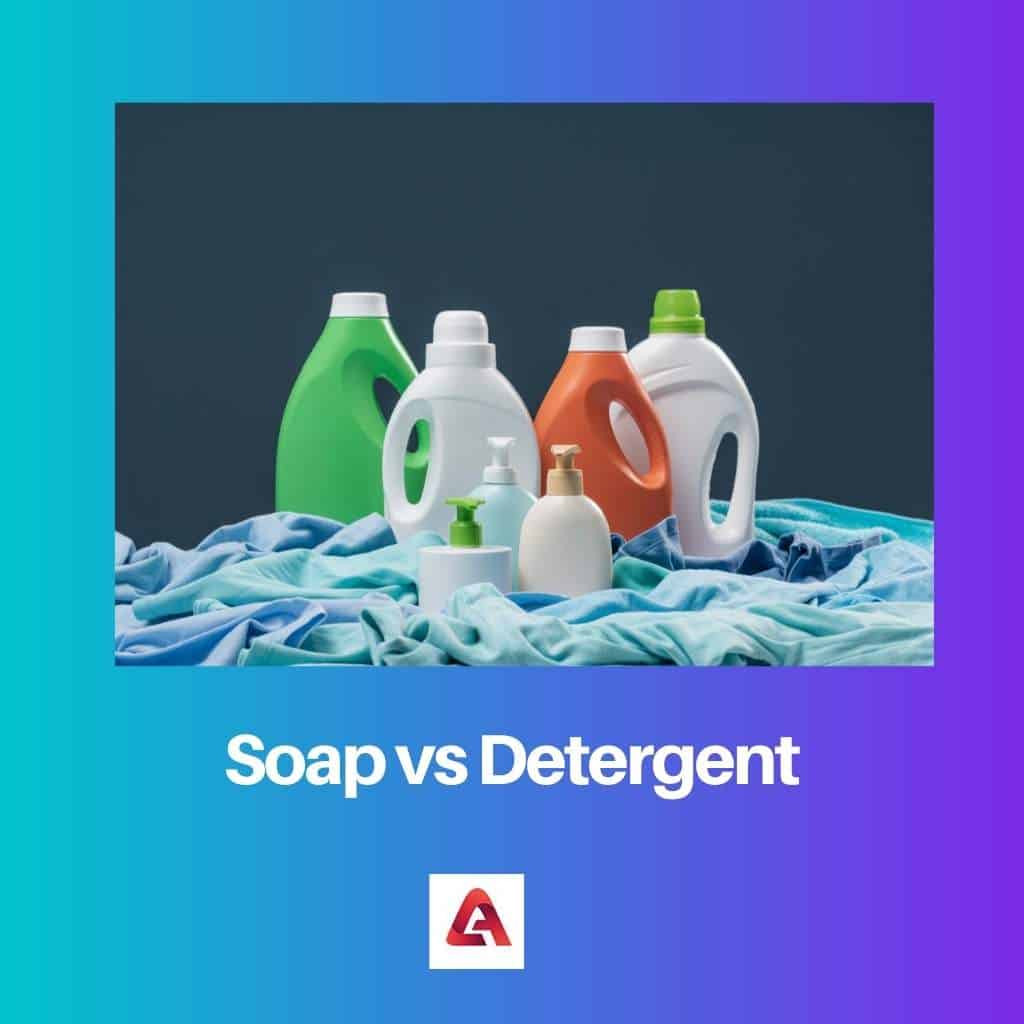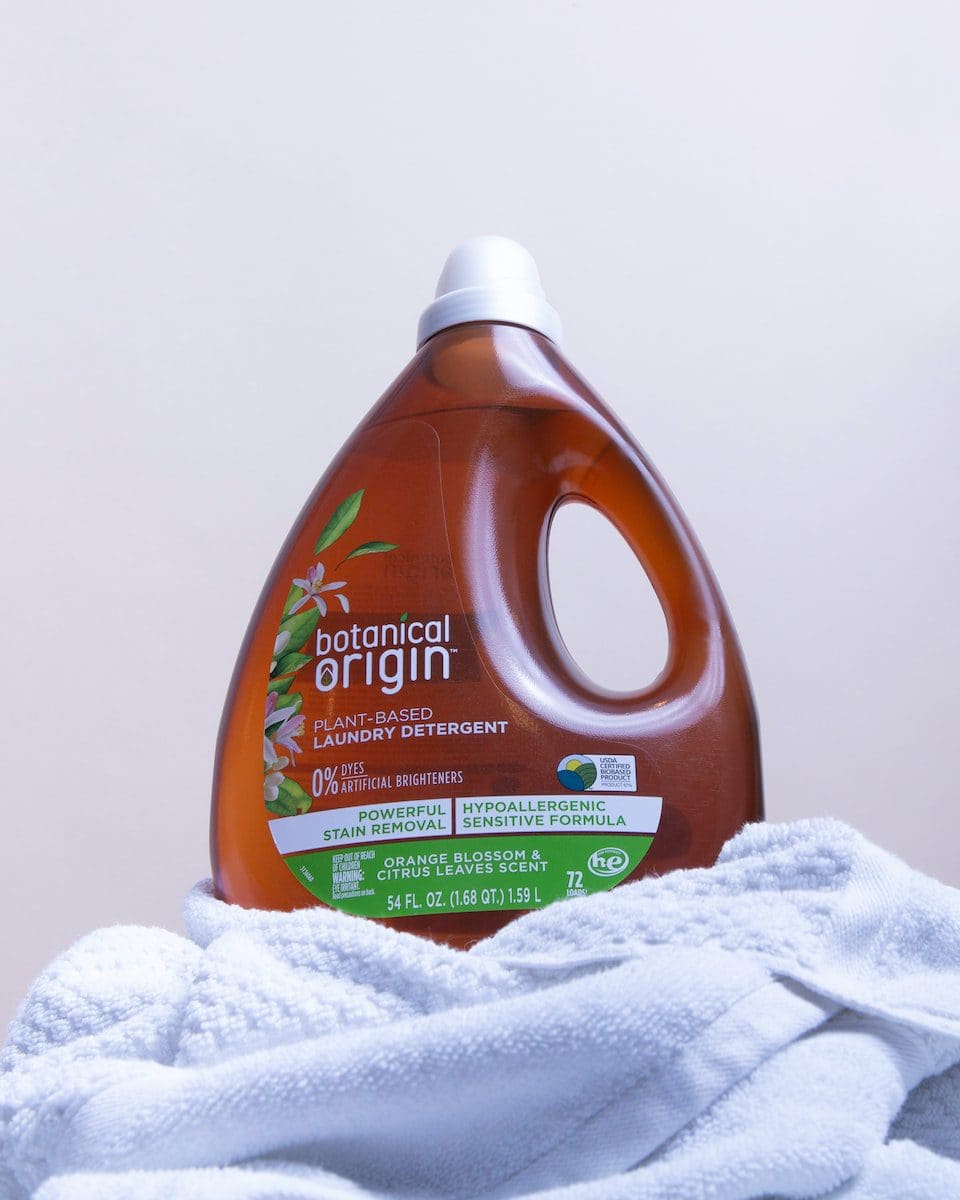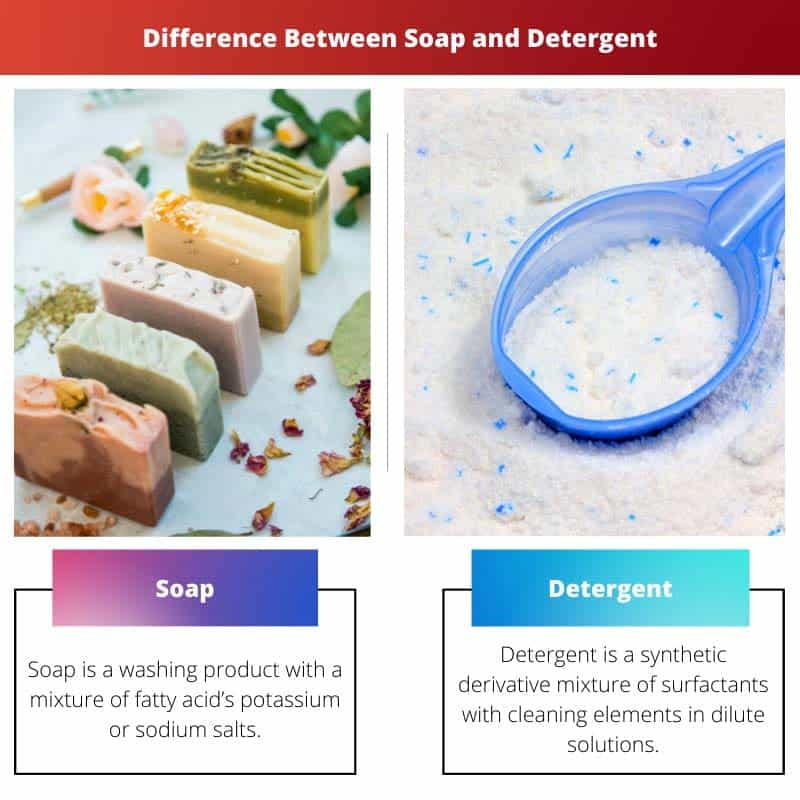Cleanliness is next to Godliness. As we say, cleaning the dirt off the clothes has always been a tedious and tiring process. However, the use of either soap, detergents, or washing powder could do wonders.
Key Takeaways
- Soaps contain natural ingredients like fats and oils, while detergents contain synthetic compounds.
- Detergents can effectively clean in hard water, whereas soap’s cleaning ability decreases.
- Detergents exhibit greater effectiveness in removing oil and grease stains compared to soaps.
Soap vs Detergent
Soap is a cleaning agent made by combining oils with an alkaline solution. When mixed with water, it attracts dirt, allowing them to be washed away. Detergent is a synthetic cleaning agent designed to be more effective than soap in removing dirt and stains, especially in hard water.

Soap is a washing product with a mixture of fatty acid’s potassium or sodium salts. From fruity to rough, soaps have been used as a cleansing and lubricating product since 2800 BC.
On the other hand, detergent is a mixture of surfactants with cleaning elements in dilute solutions. Detergents have been used since the 17th century and are lately available as powders or concentrated solutions for washing routines.
Comparison Table
| Parameters of Comparison | Soap | Detergent |
|---|---|---|
| Meaning | Soap is a sodium or potassium salt of a fatty acid, which is used for cleansing and lubricating products. Soap is an emulsifying agent as it kills germs and washes out by running water. Soaps are sloppy and thick cleaning agents. | Detergents are a mixture of surfactants with cleaning elements that come in dilute solutions and engender foaming agents. Detergents are available as powders or concentrated solutions. Detergent is similar to soap but highly soluble in hard water and used for quick cleaning. |
| Etymology | Soap was made back in 2800 BC in ancient Babylon, where the formula of soap-making had been written down on a Babylonian clay tablet. The Babylon soap consists of fatty acid, animal fats and wood ash which aid to clean the dirt. | The term ‘Detergent’ is derived from the Latin verb “Detergere”, which means wipe away the dirt and was recognised as Detergent largely in the 17th century. |
| Components | The main components added to make soap are fat, alkali, lye, distilled water, vegetable or animal oil, redolent (if needed any fragrance) and potassium hydroxide. | Detergent compounded with the family of alkylbenzene sulfonates, amphiphilic, party hydrophilic and partly hydrophobic |
| Types | Toilet soaps, glycerin soap, non-toilet, liquid soap, antiseptic soaps, bar soaps, ready-made soaps base etc. | There are four types of detergent for each household application such as anionic detergent, non-ionic, cationic and amphoteric detergent. |
| Application | Various soaps are used for disparate uses. For instance, cleansing soap is used to clean yourself from the bath and kitchen soap is to kill the bacteria from the used vessels. | Detergent is used in many household cleaning, laundry and dishwashing detergents. |
What is Soap?
Soap is a washing product with a mixture of fatty acid’s potassium or sodium salts. The soaps consist of emulsifying agents, which are preeminent substances for killing germs and washing out dirt off the surfaces.
Soap has been in use since 2800 BC in ancient Babylon, where the formula of soap-making had been written down on a Babylonian clay tablet.
Subsequently, glycerin soaps, transparent soaps, liquid soaps, toilet soaps, kitchen soaps, medicated soaps, and many more evolved.
The soaps are thick and sloppy and prepared by a process called saponification. Saponification is carried out by converting the fat, alkali, lye, distilled water, vegetable or animal oil, redolent (if needed, any fragrance), or potassium hydroxide into soap and alcohol by the action of aqueous alkali.
Eventually, soaps are used for many purposes, including bathing soaps for cleaning oneself and kitchen soap to kill the bacteria from the vessels and other bodies.

What is Detergent?
Detergent is a synthetic derivative mixture of surfactants with cleaning elements in dilute solutions. Due to their higher solubility, detergents are good for removing dirt in hard water and saline water for a quick and easy clean-off.
The detergent was in use only by the 17th century, where the term ‘Detergent’ is derived from the Latin verb “Detergere”, which means to wipe away the dirt from a surface.
Detergents are from the family of alkyl benzene sulfonates, an amphiphilic structure, where the hydrophilic partly attaches to the water, while the hydrophobic partly repels water to pull off the dirt easily.
Over and above, detergents are classified into four types in the case of household applications an anionic detergent, non-ionic, cationic and amphoteric detergent.

Main Differences Between Soap and Detergent
- Soap is classified as liquid soap, Toilet soap, non-toilet, glycerin soap and antiseptic soap etc. Albeit detergent is disparate into four categories- non-ionic, amphoteric detergent, cationic and anionic detergent.
- Soap is most commonly used for cleansing our body, washing off the vessels, and cleaning other households. Notwithstanding, Detergent is also a cleansing product and includes laundry detergent and dishwashing detergent.




